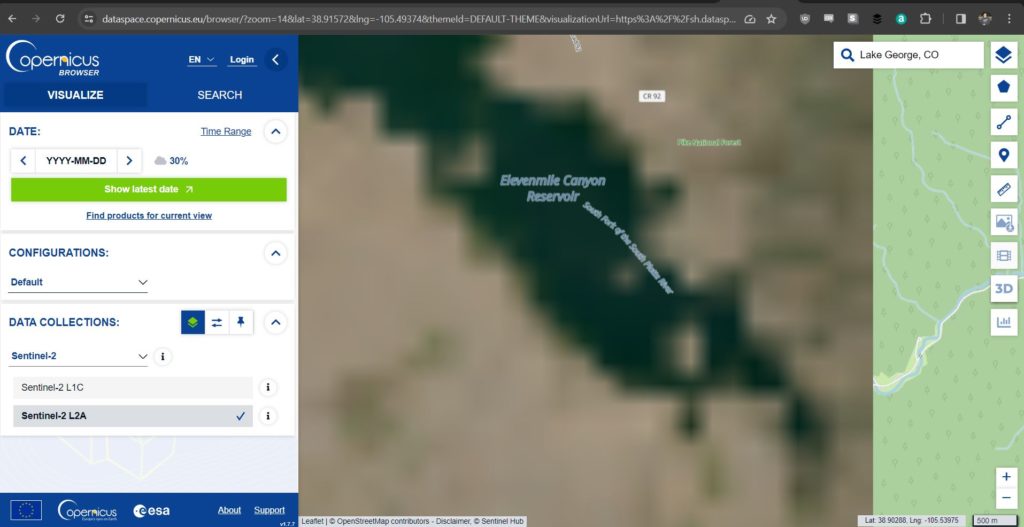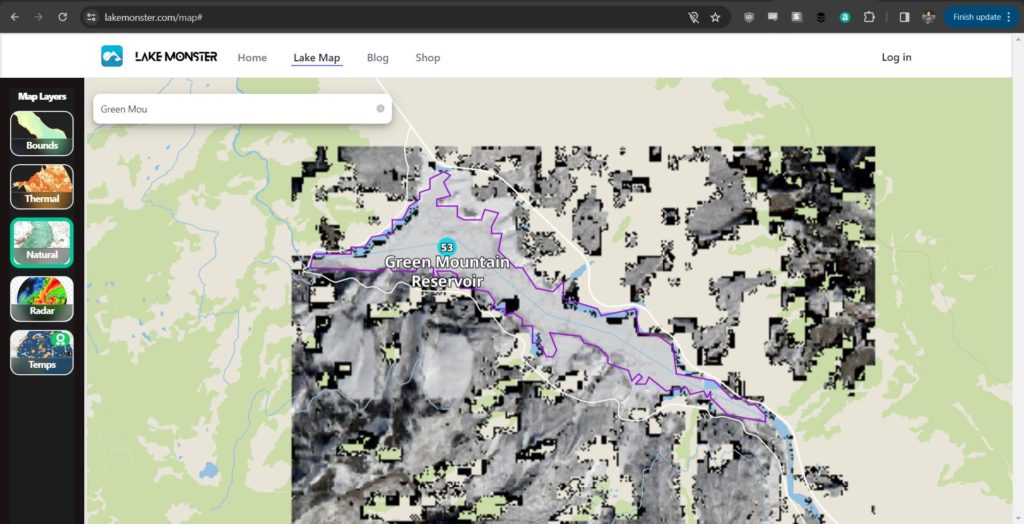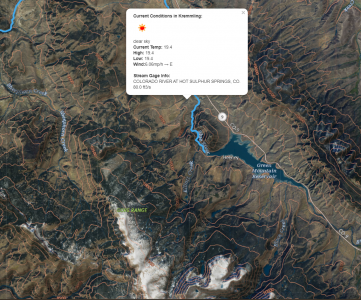If you spend any time on Facebook ice fishing groups, you’ll see the common question: “What’s the ice conditions at ______?” pretty much non-stop. In the digital age it’s easy to throw out a question to the hive mind and hopefully get a nice answer. For me in Colorado there’s an excellent resource in the Facebook group Colorado Ice Conditions, as a bit of a public service they release ice conditions about once a week, or every other week. This data is mostly compiled from other users input. But how else would you be able to check ice fishing lake conditions? What about lakes that not many people go to?
Being the map data geek that I am, I found that there are daily pulls of satellite imagery available if you know where to look. Dave M on the Ice Fishing Colorado Facebook group first mentioned it to the community, but using Sentinel Hub and Copernicus gives you a wealth of information at your fingertips. In the early part of the season, say November for Colorado, you can browse imagery for ice fishing lake conditions to see when lakes are finally capped. Knowing when lakes are fully frozen over is key to understanding whether conditions are right for building safe ice.
Copernicus Browser
Copernicus, formerly known as the now retired Sentinel Hub or Sentinel Playground makes use of Sentinel satellite imagery. Going to their website brings up a fairly intense web view map that you can use the upper right hand search bar to look at a town near your lake in question. In the below I wanted to know the winter ice fishing lake conditions for Elevenmile Reservoir in Lake George, CO. The bottom left selection in the search allows you to choose which satellite imagery to look at, here I chose Sentinel-2 L2A. That data set excludes some issues with light being reflected that sometimes muddies the results — but it may take longer to load. Clicking the green button loads the most recent imagery data.

Once your resultant imagery loads you can mess with the layers a bit. True Color and Highlight Optimized Natural Color are your friends here. In this imagery taken just three days ago we see that Elevenmile Canyon Reservoir is entirely capped with ice. While this doesn’t tell us how thick the ice is we can go back in the historical imagery to see how long since it was first capped. This gives us a little idea as to how long it’s been cold enough in the area.

Marina Reports
The old school way of figuring out ice fishing lake conditions was always to check your local fishing reports. Marinas, guides, and ice crazy retirees often do the leg work for you and post the data online, or on boards at your local tackle shops. For many of the state parks in Colorado if there’s a marina on site that stays open and sells bait, they will put together a fishing report.
The Elevenmile Canyon Reservoir fishing report is posted frequently by 11Mile Sports that runs the Marina online, and provides good safety and catch details. They’ll often provide what people have been reporting the bites on, where some of the action is, and how to catch some of your target species. As always, support your local Mom and Pop tackle shop where you can.
Lake Monster
Another option to check whether a lake has iced over are Apps like LakeMonster. Much of the data provided is on the premium version, which we don’t pay for. However, the free version of the app and website show imagery data for local lakes. Often this is enough data to go on to see if a lake is capped with ice and whether it’s worth the drive to check if the ice is safe to proceed.

You should now have a few tools at your disposal before being that guy screaming into the void as you’re trying to pack your truck the night before. Just remember that conditions change hourly out there, particularly for places like Colorado. You can develop pressure ridges, many of our local waters are reservoirs that levels are changed with the changing needs of the users of the water resources. Always bring a spud bar, flotation gear, and cleats if you can help it. Be safe, and get after it!
| Disclaimer: It should go without saying, but be careful on the ice. No ice is truly completely safe. Be armed with a spud bar, and safety equipment, go with a buddy if you can. |









